29. April 2022 von Michael Grünstäudl
“A good sign as to whether there is free speech is, is someone you don’t like allowed to say something you don’t like? If that is the case, we have free speech.” Elon Musk (2022)
I strongly support initiatives that advocate free speech in general and academic freedom in particular. Given that a Marxist student group has recently tried to enact Cancel Culture at the Freie Universität Berlin, this support seems especially important. Cancel Culture is not a new phenomenon and has been observed whenever groups try to silence free speech in a society; the struggle sessions of Maoist China are just one of many examples of cancel culture. Irrespective of its past occurrences, cancel culture is a serious problem and should not be tolerated. It is intimidating faculty, students, and administrative staff alike and is unbecoming of a liberal society.

Cancel culture in Maoist China (Source of image: https://www.quora.com/What-is-a-Maoist-struggle-session)
A valuable initiative that speaks out against cancel culture and supports academic freedom of speech is the Netzwerk Wissenschaftsfreiheit. My encounter with students trying to enact cancel culture is documented here: https://www.netzwerk-wissenschaftsfreiheit.de/presse/
Stellungnahme von Michael Grünstäudl, PhD, vom 23. Februar 2022
Ein Eichhörnchen als Sprengmeister – „Cancel Culture“ als Strategie des AStA der Freien Universität Berlin?
Jüngste Geschehnisse lassen erhebliche Zweifel daran aufkommen, ob der Allgemeine Studentenausschuss der Freien Universität Berlin (im Folgenden kurz „AStA“), also eine kleine Gruppe der dort Studierenden, seiner gesetzlichen Verpflichtung nachkommt. Zu den Aufgaben des AStA als Organ der Studierendenschaft zählt es, „die Bereitschaft ihrer Mitglieder zur aktiven Toleranz sowie zum Eintreten für die Grund- und Menschenrechte zu fördern“ (§18 Abs. 2 Nr. 4 des Berliner Hochschulgesetzes). Was war geschehen?
Ohne je ein Wort mit mir gewechselt zu haben, veröffentlichte der AStA am 26. Januar 2022 ein Statement mit unrichtigen Behauptungen gegen mich als Lehrenden an der Freien Universität Berlin und forderte beinahe scharfrichterlich das „Stoppen meines Habilitationsprozesses“ und dass es mir „verunmöglicht wird, zukünftig weiter im akademischen Rahmen tätig zu sein“. Fragt man sich verwundert nach dem Hintergrund des AStA und besucht dessen offizielle Webseite, so sticht sogleich eine eindeutige Symbolik ins Auge1: im Logo des AStA prangt ein fünfzackiger roter Stern, auf seiner Eingangswebseite ist ein großes rotes Eichhörnchen abgebildet, welches einen vermeintlichen Sprengstoff-Detonator bedient und laut AStA-Dateinamen die Bezeichnung „Sprenghorn“ trägt2. Eine sehr ähnliche Symbolik wird auch im genannten Statement des AStA verwendet.
Bizarr sind auch die Vorwürfe des AStA gegen mich. So wird mir vom AStA eine rechte politische Haltung unterstellt, obwohl ich keiner politischen Partei oder Organisation angehöre oder je für eine solche tätig war. Ich habe mich auch in Forschung und Lehre noch nie politisch geäußert. Kurz gesagt: Ich bin eine unpolitische Person, die sich weder von der linken noch von der rechten politischen Seite vereinnahmen lässt.
Dennoch versucht mir der AStA eine rechte politische Haltung zuzuschieben. Dies einerseits deshalb, weil sich auf meinem Account der Code-Sharing-Plattform GitHub in einem für die Lehre gar nicht vorgesehenen Unterhaltungs-Ordner (betitelt mit „FunScripts“) eine Podcast-Liste befunden habe, die unterschiedliche Themen und Sprecher umfasste. Dass diese Podcast-Liste nicht automatisch mir zugerechnet werden kann, weil auch studentische Mitarbeiter unter meinem Administratornamen darauf Schreibzugriff hatten, wurde ignoriert; ich jedenfalls habe auf GitHub nie politische Inhalte abgespeichert. Vor allem aber ignorierte der AStA, dass ein von ihm besonders kritisierter Youtube-Link sprichwörtlich „ins Leere“ führt – der angeprangerte Youtube-Channel ist nämlich gar nicht funktionstüchtig3. Mir aufgrund der bloßen Existenz eines noch dazu leeren Youtube-Links eine politische Haltung zu unterstellen, ist absurd.
Eine rechte politische Haltung versucht mir der AStA andererseits deshalb zuzuschieben, weil ich als Privatperson die ‚Gemeinsame Erklärung 2018‘ unterstützt habe. Diese Erklärung ist in Ihrer Kürze und Schlichtheit – sie umfasst lediglich zwei Sätze und kann im Internet leicht nachgelesen werden4 – ein Aufruf zur Einhaltung der rechtsstaatlichen Ordnung, also meiner Meinung nach nicht politisch. Jemandem auf Grund seines Einstehens für rechtsstaatliche Ordnung eine rechte Gesinnung zu unterstellen, ist absurd. Tausende Akademiker unterschiedlichster Fachrichtungen und insgesamt über 165.000 Unterstützer aus ganz Deutschland hatten sich dieser Erklärung angeschlossen. Selbst der Petitionsausschuss des Deutschen Bundestags hat diese Erklärung behandelt. Eine so große Anzahl von Unterzeichnern repräsentiert naturgemäß unterschiedlichste Motive und Weltanschauungen. Meint der AStA etwa, dass alle 165.000 Unterstützer dieser Erklärung eine rechte politische Haltung haben? Es versteht sich eigentlich von selbst, sei aber gerne in Erinnerung gerufen: Wer eine öffentliche Erklärung unterzeichnet, unterstützt ihre Inhalte, nicht aber Drittpersonen, welche die Erklärung ebenfalls unterzeichneten.
Worum geht es in diesem Fall wirklich? Ist das Vorgehen des AStA nicht bereits der Versuch, Cancel Culture an der Freien Universität Berlin zu etablieren? Zu ‚Cancel Culture‘ zählen Versuche, Wissenschaftlern durch Unterstellungen, gepaart mit Forderungen von Lehr- oder Sprechverboten, eine diskreditierende politische Haltung zuzusprechen, um diesen Personen dann „das Recht zu reden abzusprechen oder institutionell zu entziehen“5. Vor dem Hintergrund eigener Weltanschauung und politischer Ziele und mit aktivistischen Maßnahmen wird dann beansprucht, „festlegen zu können, welche Fragestellungen, Themen und Argumente verwerflich sind. Damit wird der Versuch unternommen, Forschung und Lehre weltanschaulich zu normieren und politisch zu instrumentalisieren. Wer nicht mitspielt, muss damit rechnen, diskreditiert zu werden“6. Das Netzwerk Wissenschaftsfreiheit e.V. dokumentiert die seit Jahren anwachsende Zahl von Angriffen auf die Freiheit von Forschung und Lehre im deutschsprachigen Raum und weist in diesem Zusammenhang bereits auf den AStA der Freien Universität Berlin hin5.
Ob es einer Gruppierung, die sich selbst mit einem vermeintlichen Sprengstoff-Detonator kennzeichnet, gelingt, die Freiheit von Forschung und Lehre an einer Universität einzuschränken und Gesinnungstests zu etablieren, hängt maßgeblich von der Reaktion ihrer Entscheidungsträger ab. Für die Freie Universität Berlin wird die Durchführung und der Ausgang meines kürzlich eingeleiteten Habilitationsverfahrens gewiss ein Gradmesser zukünftiger Entwicklungen sein.
Aber es gibt auch viele positive studentische Initiativen an der Freien Universität Berlin. So wurde mir im Jahr 2017 von der Fachschaftsinitative Biologie der Preis für gute Lehre verliehen. In der Laudatio zu meiner Preisverleihung wurde ich als herzlicher und geradliniger Dozent beschrieben. Mit den Leitbegriffen der Freien Universität Berlin – Veritas, Iustitia und Libertas – habe ich mich daher seit jeher gut identifizieren können.
Hochachtungsvoll, Michael Grünstäudl, PhD
Berlin, am 23. Februar 2022
Quellen (Stand 23. Februar 2022):
1 https://web.archive.org/web/20220223153411/https://astafu.de/
2 https://web.archive.org/web/20220223153406im_/https://astafu.de/themes/astafu/images/sprenghorn.png
3 https://web.archive.org/web/20220223155431/https://www.youtube.com/feeds/videos.xml?channel_id=UCZ8uFo1RKSgEg-od3Yu10Pw
4 https://web.archive.org/web/20220223155231/https://www.erklaerung2018.de/
5 https://web.archive.org/web/20220223154827/https://www.netzwerk-wissenschaftsfreiheit.de/dokumentation/
6 https://web.archive.org/web/20220223154755/https://www.netzwerk-wissenschaftsfreiheit.de/ueber-uns/manifest/



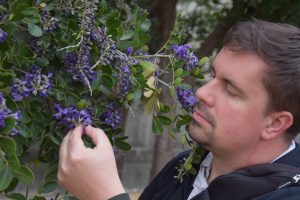
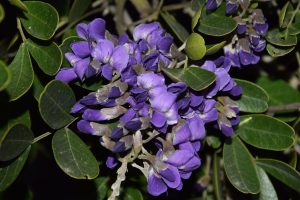

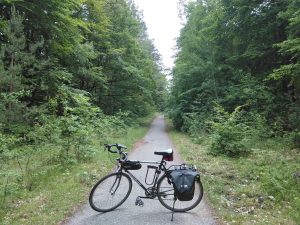
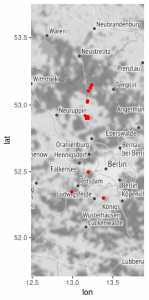
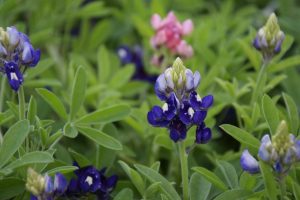
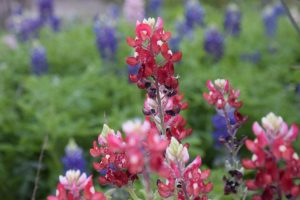

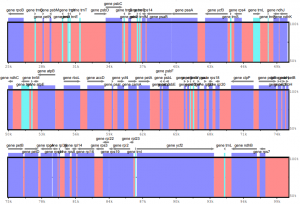
 Die
Die